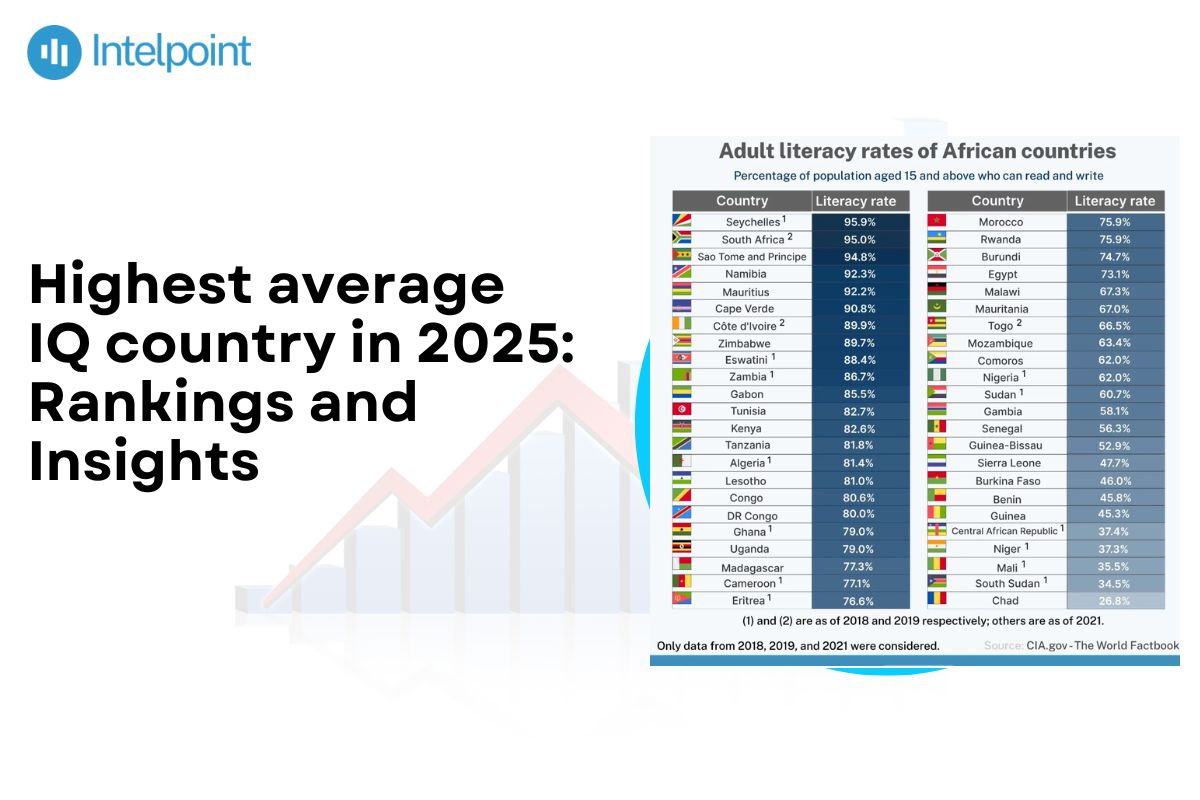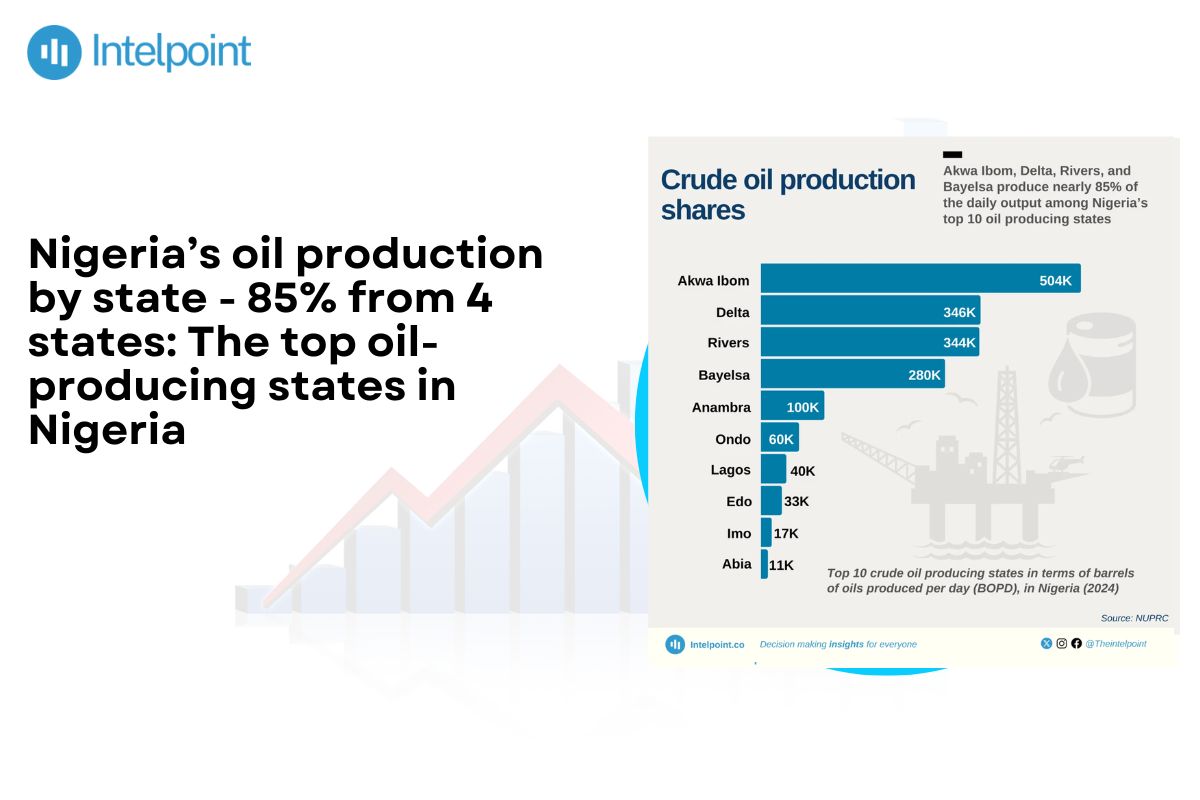Nigeria, Africa’s most populous nation, is projected to reach over 401.3 million people by 2050, becoming the third most populous country globally. It represents a 54% increase from its current population. Since 1982, Nigeria’s population has nearly tripled, growing from 80 million to over 232 million in 2024.
With a fertility rate of 5.3 children per woman and 63% of its population under 25, Nigeria faces significant challenges in housing, healthcare, infrastructure, and employment. So understanding Nigeria’s population growth will prepare you for the future.
In this article, we’ll explore how Nigeria’s population has grown since 2000, what’s driving current trends, and what the country might look like by 2050. You’ll also get insights into the economic and social forces shaping Nigeria’s future.
Key takeaways
- 2000–2010: Nigeria’s population grew from 122.2M to 154.3M, a 26.3% increase driven by a 6.08 fertility rate and 2.6% annual growth.
- 2010–2020: The population rose from 160.9M to 208.3M, with fertility dropping to 5.31 and the urban population reaching 51.96%.
- 2020–2030: Projections show a rise to 262.4M, with fertility falling to 3.82 and urbanization climbing to 59.6%.
- 2030–2040: Population is expected to hit 312.7M, as fertility drops to 3.1% and 69.1% of Nigerians live in urban areas.
- 2040–2050: Nigeria is projected to reach 401.3M people, with fertility near replacement level at 2.66 and urbanization at 79.9%.
- 2050 Outlook: Nigeria will be the world’s third-most populous country, with over 43% of the population under age 15 fueling ongoing growth.
Historical overview: population trends since 2000
Before we get started, here’s an overview of the population growth trends since 2000, with a projection till 2050 when Nigeria is predicted to become the most populous country:
| Year | Population (Millions) | Notable Insights |
| 2000 | 122.8M | High fertility (6.08), low contraceptive use |
| 2010 | 160.95M | 31% growth in a decade, urban population crosses 44% |
| 2020 | 208.3M | Growth sustained by 5.31 fertility rate, median age 18 |
| 2025 | 237.5M (Estimated) | Urbanization at 56.2%, youth under 15 = 43% |
| 2030 | 262.4M (Projected) | Fertility falls to 3.83, urban population at 59.6% |
| 2040 | 312.7M (Projected) | Urban majority solidifies, 69.1% urban |
| 2050 | 401.3M (Projected) | Nigeria becomes third most populous country |
2000–2010: High fertility and steady population growth
From 2000 to 2010, Nigeria’s population grew from 126.4 million to 166.6 million, a 31.06% increase with an average annual growth rate of 2.73%. Fertility rates averaged 6.08 births per woman in this period, driven by cultural norms and low contraceptive prevalence, which stood at around 10% during this period.
Infant mortality declined to 84.20 deaths per 1,000 live births by 2010, supported by expanded immunization programs such as the National Program on Immunization (NPI). Urban migration accelerated because during this period, Nigeria’s rural population dropped from 65.16% to 56.52%, meaning over 43% of the population had become urban by 2010.
2010-2020: Surge in urbanization and healthcare expansion
Between 2010 and 2020, Nigeria grew from 160.9 million to 208.3 million, adding 47.4 million people at an annual growth rate of 2.78–2.47%. Fertility rates declined from 5.98 births per woman in 2010 to 5.31 births per woman in 2020.
Infant mortality decreased to 72.30 deaths per 1,000 live births by 2020, supported by expanded healthcare services and immunization programs. Urbanization intensified, with Nigeria’s urban population rising from 43.48% in 2010 to 51.96% in 2020. Cities like Lagos, Kano, and Port Harcourt experienced significant growth, with Lagos exceeding 20 million residents by 2020.
2020-2030: Continued growth amidst declining fertility
Nigeria’s population is projected to grow from 208.3 million to 262.4 million between 2020 and 2030, marking a 25.9% increase over the decade. The average annual growth rate is estimated at 2.33%, gradually declining from 2.47% in 2020 to 2.01% by 2030.
Fertility rates are projected to drop from 5.31 births per woman in 2020 to 3.82 births per woman by 2030, driven by enhanced access to education and family planning services. Urbanization will intensify, with the population projected to rise from 51.96% in 2020 to 59.6% by 2030, reflecting rural-to-urban migration and natural population growth in cities like Lagos, Abuja, and Port Harcourt.
2030-2040: Slowing growth and urban majority
Nigeria’s population is projected to grow from 262.4 million to 312.7 million between 2030 and 2040, a 19.2% increase. The annual growth rate will decline from 2.01% in 2030 to 1.68% by 2040. Fertility rates might drop from 3.82 births per woman in 2030 to 3.1 births per woman by 2040.
Urbanization will intensify, with 69.1% of Nigerians living in urban areas by 2040, up from 59.6% in 2030. This shift will significantly impact infrastructure, housing, and service delivery in cities like Lagos, Kano, and Port Harcourt.
2040-2050: Approaching Plateau with urban dominance
Nigeria’s population is projected to grow from 312.7 million to 401.3 million between 2040 and 2050, marking a 28.3% increase. However, the annual growth rate might decline from 1.68% in 2040 to 1.3% by 2050. Fertility rates might also drop from 3.1 births per woman in 2040 to 2.66 births per woman by 2050, approaching replacement levels.
Urbanization will intensify, with 79.9% of Nigerians living in urban areas by 2050, up from 69.1% in 2040, driven by rural-to-urban migration and natural population growth. This trend highlights the need for sustainable urban planning and investments in infrastructure.
Population growth from 2000 to the present:

Current population trends and drivers
Nigeria’s population is estimated at 237.5 million, and the country has added over 29.2 million people since 2020. Fertility rates remain high at 4.3 births per woman, while the median age is 18.1 years. With 43% of Nigerians under 15 years old, the country sustains population momentum despite gradual fertility declines.
Urbanization continues to rise, with 55% of Nigerians living in urban areas by 2025, up from 50% in 2020, driven by rural-to-urban migration and natural growth. Lagos now exceeds 20 million residents, while cities like Kano and Abuja are expanding rapidly, straining housing, sanitation, and transport infrastructure.
Healthcare improvements have reduced infant mortality from 74.7 deaths per 1,000 live births in 2020 to 67.7 by 2025, while life expectancy has risen to 54.8 years for both sexes, up from 53.1 years in 2020. Contraceptive prevalence remains low at about 17%, with cultural norms supporting high fertility, especially in northern Nigeria, where birth rates exceed national averages. Unemployment remains high at 33%, with youth unemployment above 40%, driving internal migration and shaping urban growth patterns.
Projections for 2050: What to expect
According to United Nations projections, Nigeria’s population will reach 401.3 million by 2050. It represents a 70.9% increase from the estimated 234.5 million in 2025. However, projections vary, ranging from 359 to 450 million, depending on fertility trends and policy interventions.
The annual growth rate is expected to decline from 2.37% in 2025 to 1.3% by 2050, as fertility rates drop from 5.3 births per woman in 2025 to 2.66 by 2050, approaching replacement levels. Despite this decline, population growth will persist due to demographic momentum from Nigeria’s youthful population, where over 43% are under 15 years old in 2025.
Several factors could influence Nigeria’s population trajectory:
- Policy Changes: Education reforms and family planning programs could accelerate fertility declines.
- Economic Shifts: Economic slowdowns or instability may impact migration and urban growth patterns.
- Healthcare Advances: Improved survival rates could sustain population growth.
- Climate Pressures: Displacement or reduced retention in certain regions could affect overall growth.
Urbanization is projected to reach 79.9% by 2050, up from 56.2% in 2025. Cities like Lagos will exceed 30 million residents, making them one of the world’s largest urban centers. Kano, Port Harcourt, and Ibadan will also experience significant expansions, emphasizing the need for robust urban infrastructure planning.
Implications of rapid population growth
Population Growth
Nigeria’s projected population of 401.3 million by 2050 will place immense pressure on socio-economic systems and infrastructure. With 43% of Nigerians under age 15 in 2025, education, healthcare, and employment demand will rise sharply over the next two decades.
Urban Planning
By 2050, 79.9% of Nigerians will live in urban areas, up from 56.2% in 2025. Lagos is projected to exceed 30 million residents, making it one of the world’s largest cities. Nigeria faces a housing deficit of 20 million units as of 2024, which is expected to worsen without significant investment in urban infrastructure, including sanitation, transportation, and waste management systems.
Healthcare
Nigeria’s health system will need to serve an additional 160+ million people by 2050, but as of 2023, there are fewer than 4 doctors per 10,000 people, far below the WHO-recommended threshold of 10 per 10,000. Infant mortality has declined from 72.3 deaths per 1,000 live births in 2020 to 67.7 by 2025, but population growth continues to outpace healthcare investment, especially in rural areas.
Education
The under-15 population is projected to remain above 40% through 2050, significantly increasing the number of school-age children. Nigeria already has over 10.2 million out-of-school children, the highest globally, and rapid population growth without proportional expansion in education could deepen literacy and skill gaps.
Employment
The labor force will grow rapidly, but unemployment remains high at 33%, exceeding 40% for youth as of 2025. Without structural reforms and industrial investment, the growing workforce risks becoming an economic burden rather than a demographic dividend.
Economic Opportunities
Despite challenges, Nigeria’s median age of 18.1 years presents opportunities for consumer-driven growth and workforce expansion in tech, manufacturing, fintech, and digital services.
Conclusion
Nigeria’s population growth is one of the defining trends shaping its future. With projections pointing to over 401 million people by 2050, the stakes are high for infrastructure, education, healthcare, and economic stability. The country’s youthful population is its biggest asset and challenge.
How Nigeria prepares for this future will determine whether it unlocks a demographic dividend or faces deeper systemic strain. Share your thoughts in the comments, and subscribe for more in-depth insights on Africa’s shifting economic and demographic landscape.




